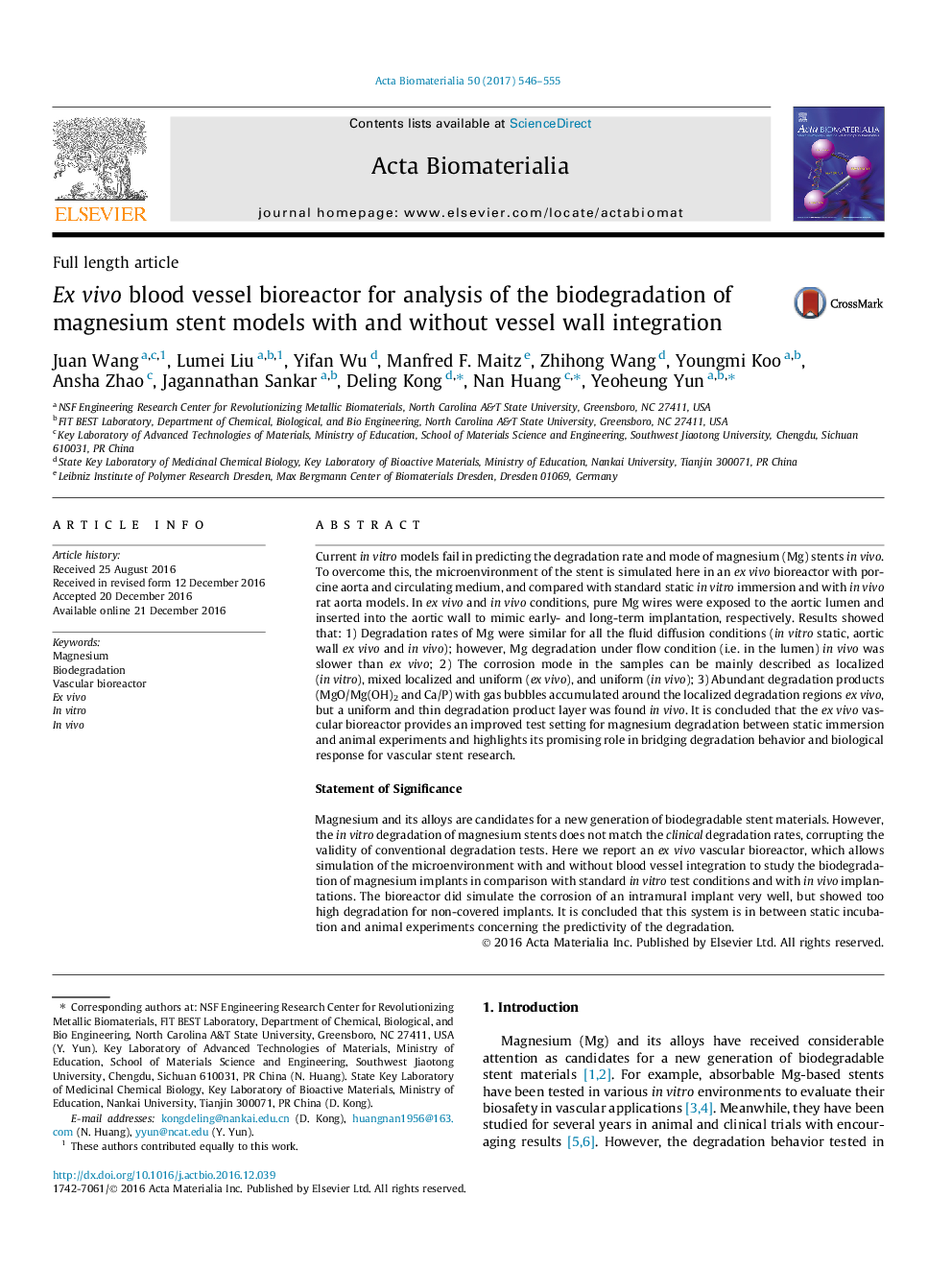| کد مقاله | کد نشریه | سال انتشار | مقاله انگلیسی | نسخه تمام متن |
|---|---|---|---|---|
| 6449769 | 1415936 | 2017 | 10 صفحه PDF | دانلود رایگان |
Current in vitro models fail in predicting the degradation rate and mode of magnesium (Mg) stents in vivo. To overcome this, the microenvironment of the stent is simulated here in an ex vivo bioreactor with porcine aorta and circulating medium, and compared with standard static in vitro immersion and with in vivo rat aorta models. In ex vivo and in vivo conditions, pure Mg wires were exposed to the aortic lumen and inserted into the aortic wall to mimic early- and long-term implantation, respectively. Results showed that: 1) Degradation rates of Mg were similar for all the fluid diffusion conditions (in vitro static, aortic wall ex vivo and in vivo); however, Mg degradation under flow condition (i.e. in the lumen) in vivo was slower than ex vivo; 2) The corrosion mode in the samples can be mainly described as localized (in vitro), mixed localized and uniform (ex vivo), and uniform (in vivo); 3) Abundant degradation products (MgO/Mg(OH)2 and Ca/P) with gas bubbles accumulated around the localized degradation regions ex vivo, but a uniform and thin degradation product layer was found in vivo. It is concluded that the ex vivo vascular bioreactor provides an improved test setting for magnesium degradation between static immersion and animal experiments and highlights its promising role in bridging degradation behavior and biological response for vascular stent research.Statement of SignificanceMagnesium and its alloys are candidates for a new generation of biodegradable stent materials. However, the in vitro degradation of magnesium stents does not match the clinical degradation rates, corrupting the validity of conventional degradation tests. Here we report an ex vivo vascular bioreactor, which allows simulation of the microenvironment with and without blood vessel integration to study the biodegradation of magnesium implants in comparison with standard in vitro test conditions and with in vivo implantations. The bioreactor did simulate the corrosion of an intramural implant very well, but showed too high degradation for non-covered implants. It is concluded that this system is in between static incubation and animal experiments concerning the predictivity of the degradation.
166
Journal: Acta Biomaterialia - Volume 50, 1 March 2017, Pages 546-555
